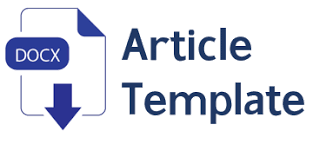Pengaruh Zakat Terhadap Tingkat Kemiskinan Masyarakat Kabupaten Padang Lawas Utara Dengan Metode Regresi Linear
DOI:
https://doi.org/10.59086/jeb.v3i1.425Keywords:
Zakat , Poverty , QuantityAbstract
This research aims to (1) find out how zakat collection affects the poverty level of the North Padang Lawas population. (2) Examining the impact of zakat distribution on the level of poverty of North Padang Lawas residents. (3) Examining the impact of distribution and collection of zakat on the degree of poverty of North Padang Lawas residents. The income level and economic growth rate of people with simple and developed lives have the same characteristics, apart from that, the increase in income per capital in developing countries is still very low. The income gap between high-income and low-income groups is still clearly visible in North Padang Lawas district. In this case, the collection of zakat funds for North Padang Lawas district uses the linear regression method. From 2019 to 2021, it was concluded that the amount of productive zakat distributed in North Padang Lawas district must be increased, because productive zakat is one of the factors that can alleviate poverty.
References
Abdelmawla, M. A. The Impacts of Zakat and Knowledge on Poverty Alleviation in Sudan : An Empirical Investigation ( 1990-2009 ) comprehensive definition of poverty, December. 2015
Abdullah, Naziruddin, dan Alias Mat Derus. The Effectiveness of Zakat in Alleviating Poverty and Inequalities. Humanocmics, 31(3), 314–329. 2015
Akram, M. M., dan Afzal, M. Dynamic Role of Zakat in Alleviating Poverty: A Case Study in Pakistan. Munich Personal RePEc Archive, 56013(56013), 1–45.2014
Ali, Isahaque, Zulkarnain A. Hatta. Zakat as a Poverty Reduction Mechanism Among the Muslim Community: Case Study of Bangladesh, Malaysia, and Indonesia. Asian Social Work and Policy Review 8.hal 59–70. 2014.
Ayuniyyah, Qurroh, et al. Zakat for Poverty Alleviation and Income Inequality Reduction. Journal of Islamic Monetary Economics and Finance. Volume 4. Number 1, pp 85 - 100. 2018
Badan Pusat Statistik. (2015) INDIKATOR KESEJAHTERAAN PENDUDUK RAKYAT 2015. https://doi.org/10.1159/000490421. diakses pada 4 Maret 2019.
Beik, I. S. Analisis Peran Zakat Dalam Mengurangi Kemiskinan: Studi Kasus Dompet Dhuafa Republika. Zakat {&} Empowering - Jurnal Pemikiran Dan Gagasan, 2(January 2009), 45–53. 2009. 89
Ghozali, Imam. Partial Least Squares Konsep, Teknki dan Aplikasi Menggunakan Program Smartpls 3.0. Edisi 2, Semarang: Salemba Empat, Universitas Diponegoro. 2015
Firmansyah. Zakat Sebagai Instrumen Pengentasan Kemiskinan dan Kesenjangan Pendapatan. Jurnal Ekonomi Dan Pembangunan, 21(2), 179–190. 2013.
Hafidhuddin, D. Peran Strategis Organisasi Zakat Dalam Menguatkan Zakat Di Dunia. Al-Infaq: Jurnal Ekonomi Islam, 2(1), 1–4. 2019.
Haque, M., Nasri, R., Nuraini, dan Yusuf, M. Measurement Optimalization of Zakat Distribution at Lembaga Amil Zakat Using Variable Measurement of Economy. Journal of Islamic Monetary Economics and Finance, 2(1), 65–92. 2016.
Huda, N., Anggraini, D., Ali, K. M., Mardoni, Y., dan Rini, N. Prioritas Solusi Permasalahan Pengelolahan Zakat dengan Metode AHP (Studi di Banten dan Kalimantan Selatan). Al-Iqtishad, VI(2), 223–238. 2014.
Hurearah, A. Strategi Kebijakan Penanggulangan Kemiskinan di Indonesia. Jurnal Ilmu Kesejahteraan Sosial, 2(1). 2013.
Husna, S., dan Nurzaman, M. S. The Effectiveness of Zakat Funds Towards The Welfare of Mustahik ( A Study on BAZNAS Bukittinggi West Sumatera ), Puskas Working Paper Series 2018.
Indrijatiningrum, M. Zakat sebagai alternatif penggalangan dana masyarakat untuk pembangunan (Thesis). Universitas Indonesia. 2005.
Maguni, W. Peran Fungsi Manajemen Dalam Pendistribusian Zakat : Distribusi Zakat Dari Muzakki Ke Mustahik Pada (Badan Amil Zakat) Baz. Al-’Adl, 6(1), 157–183. 2013. 90
Mochlasin. Zakat Untuk Mengurangi Angka Ketergantungan Ekonomi Dengan Penyaluran Model Usaha Produktif. Jurnal Penelitian Sosial Keagamaan, 12(1), 239–258. 2018.
Mohammad, F. Prospect of Poverty Eradication Through the Existing Zakat System in Pakistan. The Pakistan Develompent Review, 30(4), 1119– 1129. 1991.
Mubarok, A., dan Fanani, B. Penghimpunan Dana Zakat Nasional. PERMANA, 5(2), 7–16. 2014.
Mubarokah, I., Beik, I. S., dan Irawan, T. Impact of Zakat on Proverty and Welfare of Mustahik (Case: BAZNASCentral Java Province). Jurnal Al-Muzara’ah, 5(1), 37–50.
Saparuddin. Akuntansi Perbankan Syariah. Medan (Febi Press UIN SU), 2015
Saparuddin Siregar, Akuntansi Zakat dan Infak/Sedekah Sesuai dengan PASAK 109. h.55
Sugianto, Bagaimana Keputusan Membayar Zakat. (Al-Kharaj: Jurnal Ekonomi dan Bisnis Syariah), 2021.
Soemitra, Andri. Bank Dan Lembaga Keuangan Syriah. Jakarta: Kencana. 2015.
Tarigan Azhari Akmal, Metodologi Penelitian Ekonomi Islam, Medan: LaTansa Press 2011 Undang-Undang Republik Indonesia nomor 23 Tahun 2011 Tentang Pengelolaan Zakat
Downloads
Published
How to Cite
Issue
Section
License
Copyright (c) 2024 Irsal Irsal Ahmadi Siregar, Sugianto Sugianto, Irsal Ahmadi Siregar

This work is licensed under a Creative Commons Attribution 4.0 International License.
You are permitted to adapt and share scientific works in this journal as well as
Commercial use

This work is licensed under a Creative Commons Attribution 4.0 International License.





